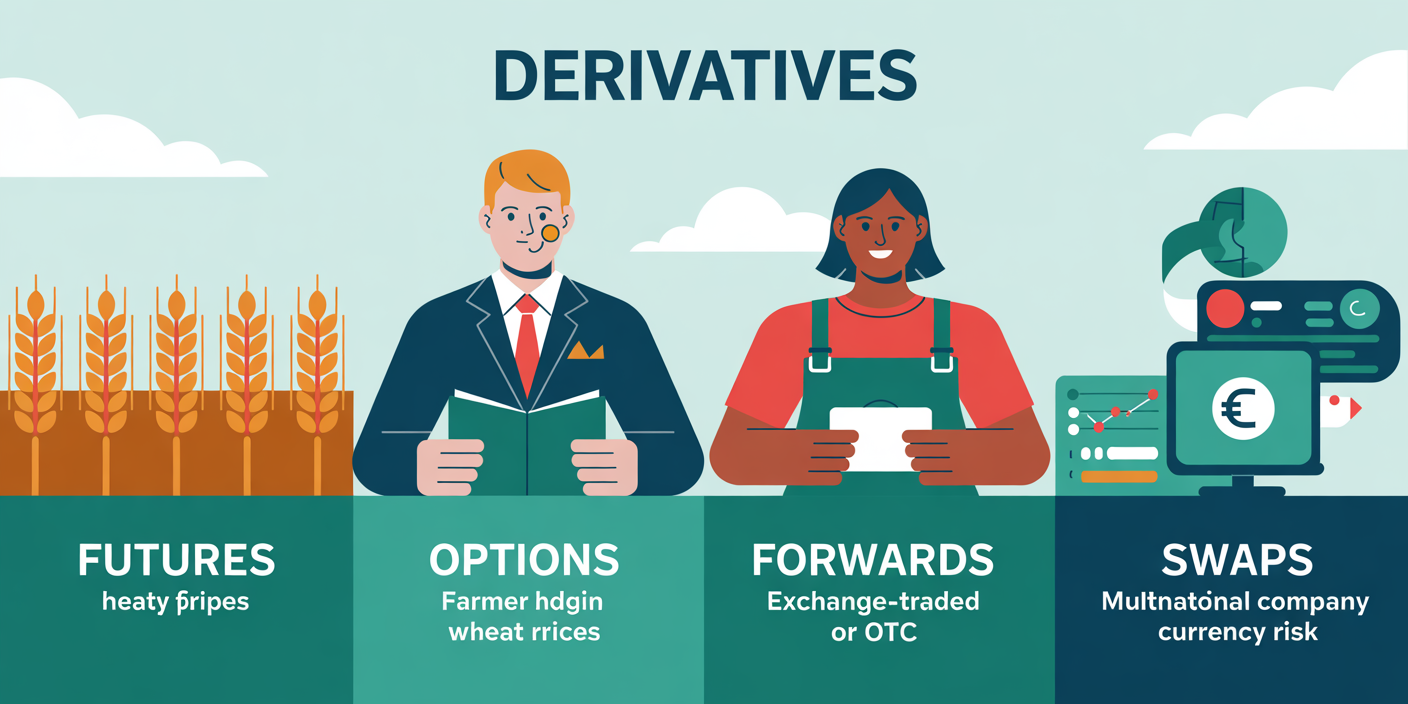How to Evaluate and Select the Right Financial Advisor for Your Needs
Anúncios
Choosing the right financial advisor can be a pivotal decision in managing your financial future. Whether you are planning for retirement, investing in education funds, or simply seeking to optimize your savings and taxes, the expertise and approach of a financial advisor can greatly influence your outcomes. However, with thousands of professionals claiming to have the best strategies, making an informed choice can be overwhelming. This article provides a comprehensive guide on how to evaluate and select a financial advisor tailored to your specific financial objectives.
Understanding Your Financial Needs and Goals
Before starting your search for a financial advisor, it’s crucial to clearly define your own financial needs and goals. Are you seeking wealth management, retirement planning, tax advice, or help with estate planning? Your priorities will shape the criteria for choosing a suitable professional.
Anúncios

For example, a young professional aiming to aggressively grow their portfolio might require a different approach than a retiree focused on income preservation and tax efficiency. According to a 2023 survey by the National Association of Personal Financial Advisors (NAPFA), 67% of clients who clearly communicated their long-term goals to their advisors reported higher satisfaction with their financial plans. This highlights the importance of self-assessment before engaging with advisors.
Mapping your financial milestones — such as buying a home, funding children’s education, or early retirement — creates a roadmap that will help you communicate more effectively and evaluate how an advisor’s expertise aligns with your needs.
Anúncios
Credentials and Qualifications: What to Look For
Financial advisors come with a variety of designations and qualifications, each signifying different expertise and ethical standards. Some of the most recognized certifications include Certified Financial Planner (CFP®), Chartered Financial Analyst (CFA), and Certified Public Accountant-Personal Financial Specialist (CPA-PFS).
The CFP® designation, for instance, requires rigorous examinations and adherence to a fiduciary standard that legally obliges the advisor to act in your best interest. According to the CFP Board, advisors holding this certification have demonstrated competency in financial planning, investments, retirement, tax laws, and ethics. On the other hand, a CFA charterholder primarily focuses on investment management and analysis, which makes them ideal for clients seeking intensive portfolio management.
Beyond qualifications, it’s important to verify the advisor’s registration and background through official databases such as the Securities and Exchange Commission’s (SEC) Investment Adviser Public Disclosure (IAPD) website or FINRA’s BrokerCheck. These resources reveal disciplinary history and complaints, safeguarding you from potential risks.
| Credential | Focus Area | Ideal For | Fiduciary Standard |
|---|---|---|---|
| CFP® | Comprehensive Financial Planning | General financial planning, retirement | Yes |
| CFA | Investment Analysis & Management | Portfolio-focused investors | Varies |
| CPA-PFS | Tax and Accounting | Tax-sensitive financial plans | Yes |
| Registered Investment Advisor (RIA) | Varies (regulated by SEC or state) | Varies based on firm | Yes |
Understanding these distinctions enhances your ability to select a financial professional who matches your specific financial profile.
Fee Structures: Decoding Costs and Transparency
Financial advisor fees vary widely and can significantly impact your net returns over time. Generally, advisors charge in one or more of the following structures: asset-based fees, hourly rates, fixed fees, or commissions.
Asset-based fees typically range from 0.5% to 2% of assets under management (AUM) annually. For example, if you have $500,000 invested and pay a 1% fee, you would pay $5,000 each year. While this arrangement aligns an advisor’s incentives with your portfolio growth, it may create reluctance on their part to provide advice for non-investment matters.
Hourly or fixed fees can be more transparent for clients with straightforward needs or those seeking one-time consultations. An hourly rate might range from $150 to $400, while fixed fees can run from $1,000 to $5,000 depending on the complexity of the plan.
Commissions are common among advisors affiliated with brokerage firms who earn money by selling financial products like insurance or mutual funds. While commissions are sometimes unavoidable, they can introduce conflicts of interest.
In a 2022 survey by the Financial Planning Association (FPA), 58% of clients preferred fee-only advisors because of perceived transparency and alignment of interests. It’s advisable to request a clear disclosure of all fees upfront and consider the total costs over time to avoid surprises.
| Fee Type | Typical Cost | Pros | Cons |
|---|---|---|---|
| Asset-Based | 0.5% – 2% of AUM | Incentive aligned with portfolio growth | Can be costly with large portfolios |
| Hourly | $150 – $400 per hour | Pay only for time used | May discourage extensive consultations |
| Fixed Fee | $1,000 – $5,000 per plan | Predictable and transparent costs | May not cover ongoing advice |
| Commission-Based | Variable | No upfront cost for client | Conflict of interest risk |
Understanding fee structures and demanding clarity are crucial steps for financially savvy decisions.
Communication Style and Personal Compatibility
Selecting a financial advisor involves more than just credentials and fees — the personal compatibility and communication style should not be underestimated. Financial decisions are often deeply personal and involving sensitive information. Hence, feeling comfortable and having trust in your advisor plays a vital role.
An advisor who explains complex concepts in simple terms and takes time to address questions can make a significant difference. For example, Susan, a 45-year-old entrepreneur from Chicago, chose her advisor mainly because he patiently walked her through tax and retirement planning strategies using relatable analogies rather than jargon-heavy explanations. This led her to implement a diversified strategy confidently.
Another practical approach is to request an initial consultation, often offered free or at a reduced cost, to gauge how the advisor communicates, listens, and understands your circumstances. Do they proactively suggest customized solutions, or do they offer generic, one-size-fits-all advice?
Client reviews and testimonials can also provide insights into responsiveness and satisfaction levels. According to a 2023 Client Experience report by Advisor Insights, clients who felt their advisors actively listened were 42% more likely to continue long-term relationships.
Types of Financial Advisors and Their Services
Financial advisors are not a homogeneous group; they differ based on the services offered, regulatory oversight, and compensation methods. The primary categories include:
1. Fee-Only Advisors: Compensated solely through client fees, eliminating conflicts of interest related to product sales. These advisors tend to be fiduciaries mandated to prioritize client interests. 2. Fee-Based Advisors: Combine fees with commissions earned from selling financial products. The dual compensation may create conflicts but can work for clients seeking specific products.
3. Broker-Dealers: Focus mainly on executing trades and may earn commissions. Though generally not fiduciaries, they must follow suitability standards regarding recommendations.
4. Robo-Advisors: Automated platforms that use algorithms to manage portfolios. While cost-effective and convenient, they lack personalized human interaction.
Choosing the right category depends on factors such as budget, complexity of your financial situation, and preference for human interaction. For instance, a retiree with complex estate planning concerns likely needs a fee-only advisor with fiduciary duties, while a tech-savvy millennial might opt for a hybrid approach combining robo-advisors for investments and human advisors for comprehensive planning.

| Advisor Type | Compensation | Regulation | Ideal Client Profile |
|---|---|---|---|
| Fee-Only | Client fees only | Fiduciary under SEC or state | Clients seeking unbiased advice |
| Fee-Based | Fees + commissions | Mixed fiduciary suitability | Those needing product solutions |
| Broker-Dealer | Commissions | Suitability standard | Investors focused on trades primarily |
| Robo-Advisor | Low fees (percentage) | Automated platform rules | Tech-friendly, cost-conscious clients |
Understanding the differences will refine your search and increase satisfaction with your chosen advisor.
Evaluating Track Records and Client References
Assessing an advisor’s track record and reputation provides tangible evidence of their performance and service quality. While past returns do not guarantee future results, consistent long-term performance aligned with your risk tolerance is a positive indicator.
Request sample financial plans or case studies that mirror your financial profile. Additionally, ask for client references, preferably individuals with similar goals. Honest testimonials can reveal how the advisor handles challenges, customizes strategies, and supports clients.
For example, John, a 52-year-old engineer, was considering two advisors—one showed him standardized portfolios, while the other provided a detailed historical analysis of past clients’ performance during market downturns. The second advisor’s transparency gave John confidence to proceed.
Online reviews from platforms like Yelp, Google, or the Better Business Bureau supplement direct references. Also, look for any disciplinary actions through regulatory bodies. According to SEC data, approximately 1 in 10 financial advisors face minor regulatory infractions — knowing this helps you avoid risky relationships.
Future Perspectives: Adapting to Changing Financial Landscapes
The role of financial advisors is evolving rapidly due to technological advances, regulatory changes, and shifting client demographics. Integrating artificial intelligence and data analytics into financial planning enhances personalization and efficiency. For instance, AI-driven tools can analyze spending habits and market trends to suggest real-time adjustments, which many top-tier advisors are beginning to adopt.
Additionally, regulatory emphasis on fiduciary duty is tightening, fostering higher transparency and client protection. The SEC’s recent proposals encourage financial advisors to disclose conflicts more clearly and adopt stricter ethical guidelines.
Future advisors may also expand services beyond traditional wealth management to include holistic wellness planning, encompassing mental health, career transitions, and social impact investing. This trend reflects growing client desire for advisors who understand their broader life goals, not just finances.
Furthermore, demographic shifts, especially the rise of younger investors with digital-first preferences, will encourage hybrid models blending human expertise with robo-advisory platforms. Keeping ahead of these trends will empower clients to choose advisors who offer the right balance of personal touch and innovative solutions.
In summary, selecting the right financial advisor requires a careful blend of understanding your own needs, evaluating credentials and fee structures, assessing personal compatibility, and considering future adaptability. Armed with this knowledge, you can build a trusted partnership that helps you navigate the complexities of financial decision-making confidently.




Post Comment